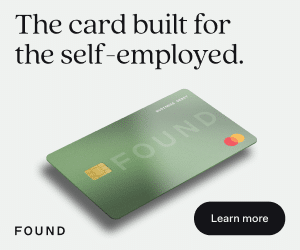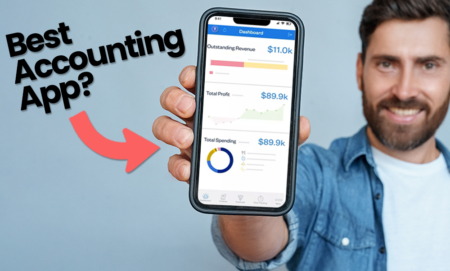If we’re talking about a small-business design agency, one that’s run by solopreneurs and freelancers, we have to admit that surviving the competition and facilitating growth can be challenging, especially in today’s rapid digital landscape. I know this first-hand, as I’ve been in your shoes. But I also know that the future of design agencies is in no way gloomy. It just requires us to keep up with times and embrace change to navigate growth.
The Current State of Design Agencies
Understanding the current state of the market as a whole is important for identifying future growth opportunities and capturing them.
According to the Global Strategic Business Report, the Design Agencies market has a global span and was estimated at $256.7 billion in 2023. By 2030, this market is projected to hit the mark of $346.7 billion. This means that the global market will be growing at a fairly steady compound annual growth rate (CAGR) of 4.4%.

Get Weekly Freelance Gigs via Email
Enter your freelancing address and we'll send you a FREE curated list of freelance jobs in your top category every week.
The numbers speak for themselves. They demonstrate the stability and decent growth capacity of the global design agencies market. So, if you’re reading this as a freelancer or a design student who just yet plans to launch a graphic design agency, this might be your sign to get active. Don’t hesitate to hire Canadian essay writing services to help with essay if you need extra help with your tasks in college and use the free time you get to acquire the needed knowledge and skills to break into this promising industry.
But what else do we know about the state of digital agencies in 2024?
Transition From Traditional to Digital
It’s no secret that design agencies have a long history. The first companies date back as far as 1786 when the world’s first advertising brand design agency was opened in London by William Taylor. At that point in history, there were no separate design agencies as they were part of broader-focused advertising companies. And of course, they focused on conventional, print media, designing advertising magazines, brochures, banners, and so on. Most of their processes were handled manually and restricted by physical and technological constraints.
Undoubtedly, a lot has changed since 1786. The entire concept of design has been fundamentally transformed. All thanks to technology and the Internet.
Starting from the rise of the Internet and the first effects of digital transformation during the late 1990s and early 2000s and all the way to these days, technology has been changing the approaches, processes, and trends in design. By this time, design agencies have shifted from traditional designs to digital environments. And the scope of design has changed too.
Now we have many different flows and subdivisions of digital design, which enables agencies to get more narrow-focused than ever. Namely, we have companies that specialize in:
- Website design
- UI design
- UX design
- Graphic design
- Logo design
- Brand design
- And other fields
Of course, this transition from traditional to digital didn’t happen overnight. However, at this point, new changes take place rapidly. That is, digitization has brought to us both an opportunity for growth and a bunch of challenges. Now, in order to navigate growth and make your web design agency thrive in the fast-paced digital landscape, you need to adopt a mindset that embraces innovation and trends.
Top Tech Innovations and Trends Shaping the Future of Design Agencies
As you now know, the best way to stay competitive and grow your small business in a digitally-driven world is to be ready to recognize trends and adopt them quickly. Now, let’s look at the top trends that are currently shaping the future for digital agencies:
AI
First and foremost, artificial intelligence is one of the primary driving forces of the future. The rise of generative AI has expanded the boundaries for creatives, enabling them to generate ideas and design templates in nearly no time. However, keeping the fine line between AI and human creativity is important.

What I personally love most about this tech innovation is that AI allows automation. You can use AI-powered tools to streamline a variety of routine tasks, such as marketing, SEO, and many others. In the meantime, you and your team will be able to focus on the most important thing—the creative process.
AR and VR
Augmented reality and virtual reality are two other innovations that change the entire design industry. With these technologies, a graphic design agency can push the boundaries and create immersive experiences that blend together their creative designs and reality or create entire new worlds.
For designers, this means the necessity to grow professionally with a focus on:
- 3D designs
- Dynamic Storytelling
- Interactivity
Reliance on Data in Design
Not so long ago, the biggest part of the design process was leaning on creativity and the unique vision of the designer. However, due to the growing competition and changing consumer behaviors, the future of design is projected to be much more data-reliant than ever.
The data-driven design eliminates the guesswork from the design process and focuses on making strategic decisions on how to personalize the design and make it more resonating. This trend might be especially pivotal if you’re running a UI UX design agency. When it comes to creating meaningful user interfaces and user experiences, relying on data can help you match your designs to user’s behavior and preferences, hence making them more efficient.
Sustainability
With the growing consciousness of our societies, eco-friendliness and sustainability have turned into major trends in different industries, and design isn’t an exception.
Today, there is an increasing demand for sustainable design practices. There are certain sustainable approaches meant for different types of design. For example, a website design agency might want to implement caching and lazy loading (for below-the-fold content) and choose green web hosting. If you are a logo design agency, you can implement sustainability by using natural imagery, picking eco colors (e.g., greens, blues, and earthy tones), and using organic typefaces.
Regardless of your design niche, you should find ways to become more sustainable in the future because this trend doesn’t seem to be going away any time soon.
Remote Workflow
Most likely, you already know the real scope of this trend. After the global pandemic, remote work has become a big trend in all industries, including design. Global collaboration is an important part of this trend.
If you’re a freelance designer, you are already using this trend to your benefit. But if you are running a design agency or planning to launch one, keep the remote opportunities top of mind. Use this trend as an opportunity to reach a wider client base, as well as a chance to tap into global talent for your team.
Tips for Navigating Growth in a Digitally-Driven World
Now you know about the major innovations and trends that are currently shaping the future of design agencies. Of course, adopting these trends is an important step in driving growth to your business. But that’s not all.
When I was growing my own UX design agency, here are the three main growth tactics I explored on the path and gripped:

Digital-First Mindset
When I was an independent freelance designer and even when I started my first agency, of course, I had to operate in the digital landscape. But I didn’t have a truly digital-first mindset. And this might’ve been one of the biggest stumbling points in my growth.
A genuine digital-first mindset is one that prioritizes digital transformation. It’s about continuously learning and adopting new technology before your competitors do it first.
Scalable and Flexible Operations
This might sound familiar to aspiring solopreneurs and business owners. When you are at the beginning of your path, it’s common to handle 90% of tasks and operations on your own. It was the same for me. And that’s a big progress killer.
The truth is that you need flexible and scalable operations in order to facilitate growth in a fast-paced environment. This means you need to delegate, outsource, leverage freelance, and use other adaptable strategies to make your daily operations viable in the face of rapid scaling.
Investment in Tools and Talent
When your work starts paying off, using the first revenues at your discretion can feel tempting. However, you should keep in mind that steady growth requires investment.
For digital agencies, in particular, it requires investment in top talent in the first place. This implies hiring global talent and investing in upskilling your existing staff. Another worthy area of investment is technology. Don’t hesitate to reinvest your revenue in reliable tools and platforms that can streamline your daily processes and boost productivity.
The Final Words
These days, starting a design agency is easier than ever, even for a solopreneur. On the other hand, growing it and ensuring that it remains competitive is hard in today’s fast-paced world. Of course, overcoming the challenges of a rapidly changing digital landscape might feel draining and complicated. But if you want to handle it, you need to future-proof your business.
After reading this guide, you now know about the major trends shaping the future of design agencies and the top strategies for navigating growth in a digitally driven world. Start using these tips today to ensure the prosperity of your agency tomorrow!

Keep the conversation going...
Over 10,000 of us are having daily conversations over in our free Facebook group and we'd love to see you there. Join us!


